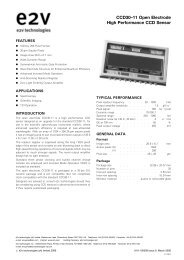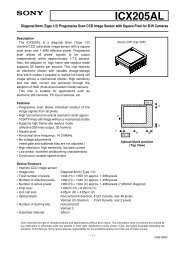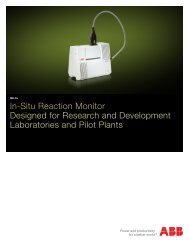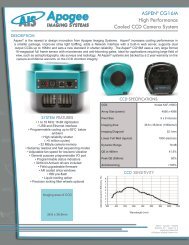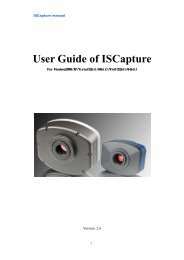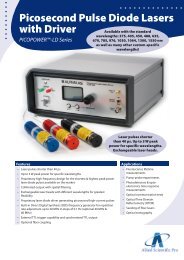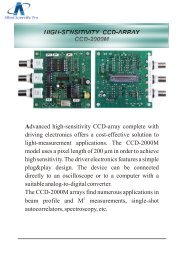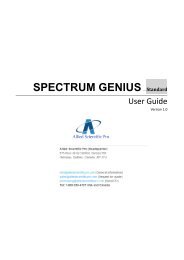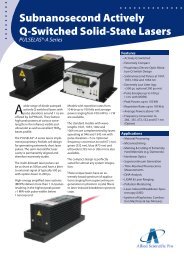Integrating Spheres theory and applications - Allied Scientific Pro
Integrating Spheres theory and applications - Allied Scientific Pro
Integrating Spheres theory and applications - Allied Scientific Pro
Create successful ePaper yourself
Turn your PDF publications into a flip-book with our unique Google optimized e-Paper software.
<strong>Integrating</strong> Sphere Theory <strong>and</strong> Applicationsto increase the radiance as well as provide a step wisemethod of attenuating the radiance level.Tungsten halogen lamps are most commonly used withintegrating sphere sources. These lamps provide a continuousspectrum, free of emission lines or temporal instabilitywhen operated from a current regulated power supply. Thespectral radiance of the sphere source can be estimatedby combining the sphere radiance equation with blackbodyequations for the spectral radiant flux.There are two main advantages of the d/0° geometry. Theincident flux is significantly greater since integrating spheresprovide total light collection, thus increasing the signaltonoiseratio for the instrument. Polychromatic irradiationwill stimulate photon induced radiance, such as that due tofluorescence, which often needs to be quantified in manycolor <strong>and</strong> appearance measurements. The main disadvantageof d/0° instruments is sample heating which can inducethermochromic effects. Many commercial color measurementinstruments will utilize flashlamps to reduce thermalmeasurement error.3.3 Uniform SourcesFIGURE 27In the previous <strong>applications</strong>, the integrating sphere is usedas a collecting device for the measurement of radiant flux,either the absolute amount emitted from a light source itselfor the relative amount of flux transmitted or reflected bymaterials.The open port of an internally illuminated integrating spherecan itself serve as a large area diffuse light source.<strong>and</strong>,where;EQ. 31EQ. 32r(l) = spectral reflectance of sphere surfaceF i l= spectral radiant fluxF o= rated wattage of the lampl = wavelengthT = temperature of the filament≈ correlated color temperaturec 1, c 2, s = blackbody constantsThe radiance equation is multiplied by the number of lampsif more than one lamp is used.FIGURE 28Lamps are placed inside the integrating sphere around theperimeter of the viewing port. The lamps are usually baffledfrom the port. The radiance of the sphere is a function of thewattage rating of the lamp. Multiple lamps can be used15





